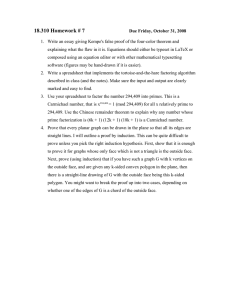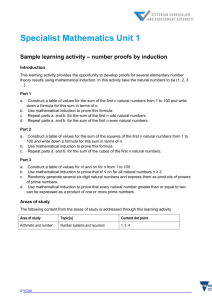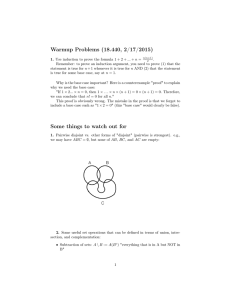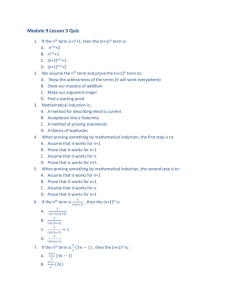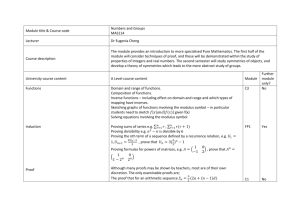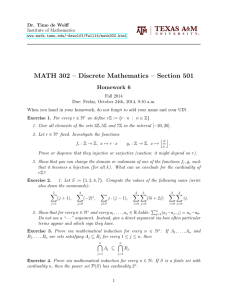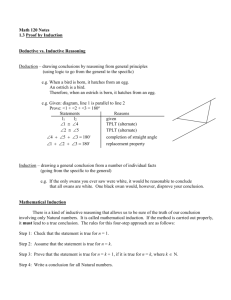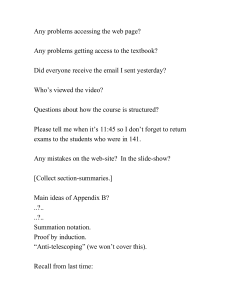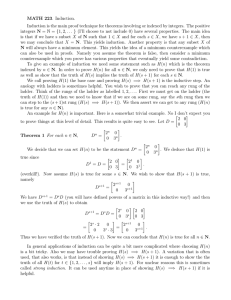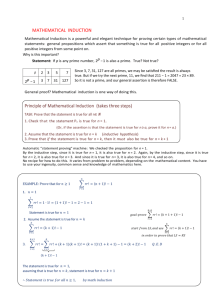Module 9 Lesson 3 Mathematical Induction Notes
advertisement
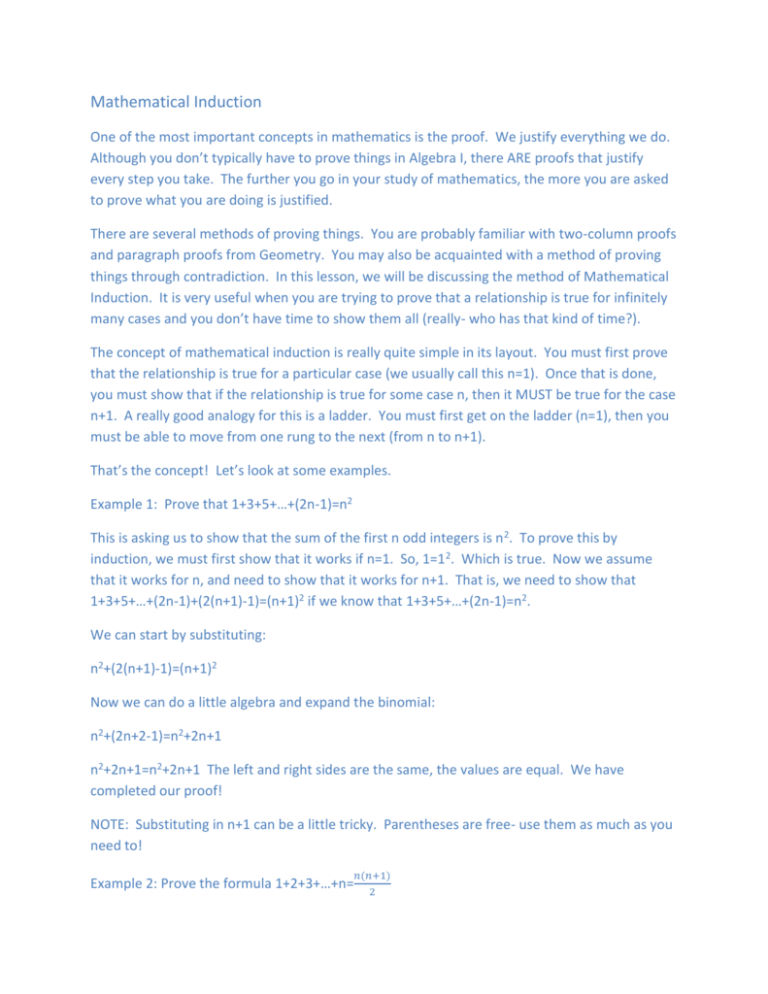
Mathematical Induction One of the most important concepts in mathematics is the proof. We justify everything we do. Although you don’t typically have to prove things in Algebra I, there ARE proofs that justify every step you take. The further you go in your study of mathematics, the more you are asked to prove what you are doing is justified. There are several methods of proving things. You are probably familiar with two-column proofs and paragraph proofs from Geometry. You may also be acquainted with a method of proving things through contradiction. In this lesson, we will be discussing the method of Mathematical Induction. It is very useful when you are trying to prove that a relationship is true for infinitely many cases and you don’t have time to show them all (really- who has that kind of time?). The concept of mathematical induction is really quite simple in its layout. You must first prove that the relationship is true for a particular case (we usually call this n=1). Once that is done, you must show that if the relationship is true for some case n, then it MUST be true for the case n+1. A really good analogy for this is a ladder. You must first get on the ladder (n=1), then you must be able to move from one rung to the next (from n to n+1). That’s the concept! Let’s look at some examples. Example 1: Prove that 1+3+5+…+(2n-1)=n2 This is asking us to show that the sum of the first n odd integers is n 2. To prove this by induction, we must first show that it works if n=1. So, 1=12. Which is true. Now we assume that it works for n, and need to show that it works for n+1. That is, we need to show that 1+3+5+…+(2n-1)+(2(n+1)-1)=(n+1)2 if we know that 1+3+5+…+(2n-1)=n2. We can start by substituting: n2+(2(n+1)-1)=(n+1)2 Now we can do a little algebra and expand the binomial: n2+(2n+2-1)=n2+2n+1 n2+2n+1=n2+2n+1 The left and right sides are the same, the values are equal. We have completed our proof! NOTE: Substituting in n+1 can be a little tricky. Parentheses are free- use them as much as you need to! Example 2: Prove the formula 1+2+3+…+n= 𝑛(𝑛+1) 2 Again, we must start with n=1: 1= 1(1+1) 2 2 → 1 = 2 → 1 = 1. So it works for 1. Now let us assume that it works for n, we need to show it holds for n+1: 𝑛(𝑛+1) 1+2+3+…+n= 2 (given) We want to show that 1+2+…+n+(n+1)= (𝑛+1)(𝑛+2) 2 We can substitute to get: 𝑛(𝑛+1) 2 𝑛(𝑛+1) 2 𝑛2 +𝑛 2 + (𝑛 + 1) = + + = 2 2𝑛+2 𝑛2 +3𝑛+2 2 2(𝑛+1) 2 = = (𝑛+1)(𝑛+2) 2 (𝑛+1)(𝑛+2) 2 𝑛2 +3𝑛+2 2 𝑛2 +3𝑛+2 2 (common denominator of 2) (distributive property) (combining like terms) Naturally, the more complicated the problem, the more complicated the solution, but the process remains the same! Induction is one of the more powerful methods of proof we have available to us, be sure you are comfortable with it!
